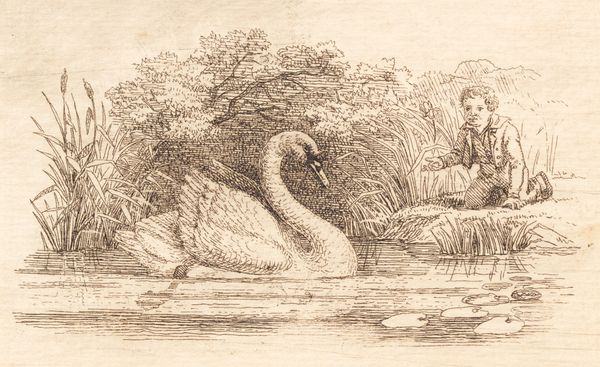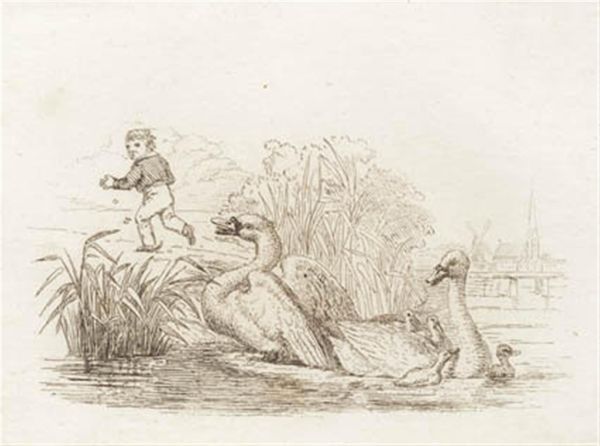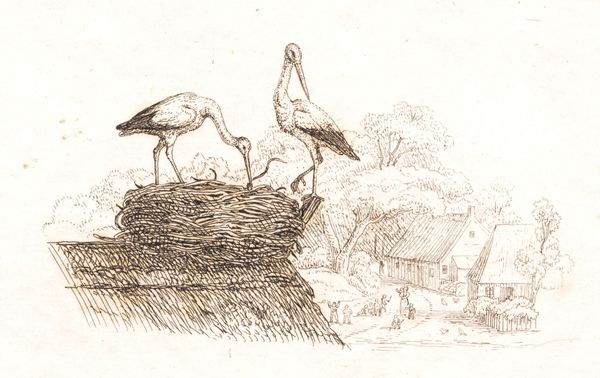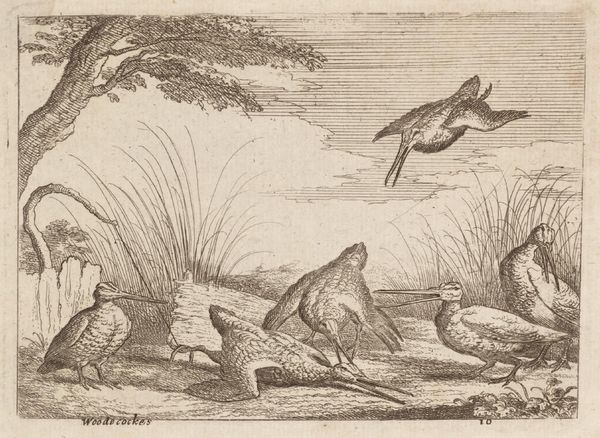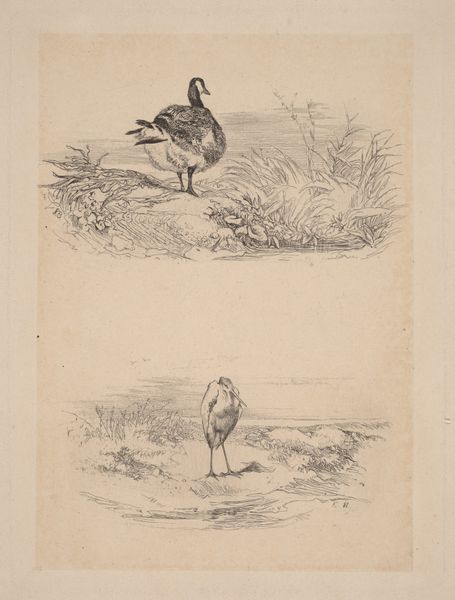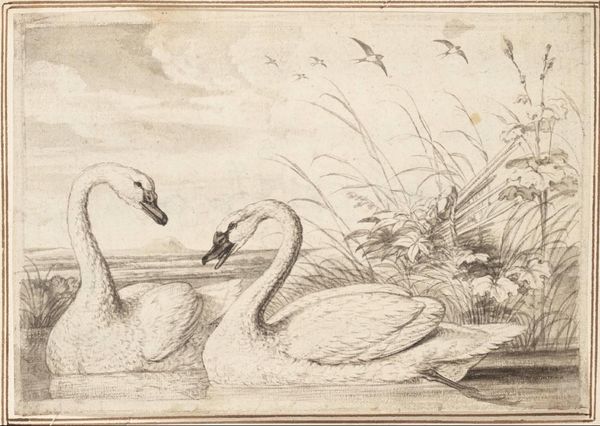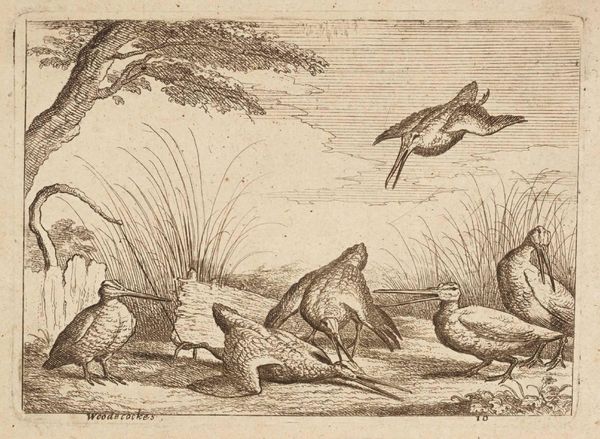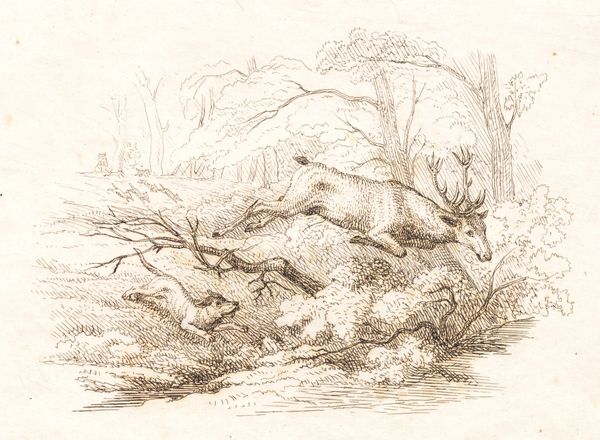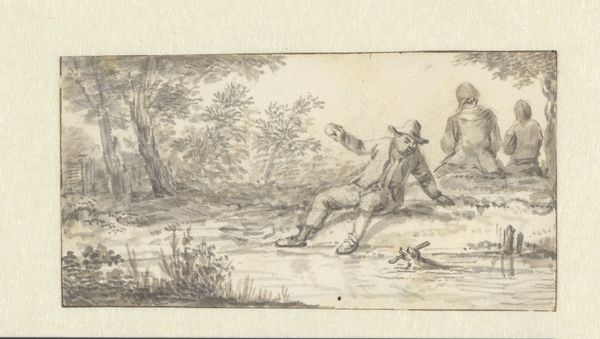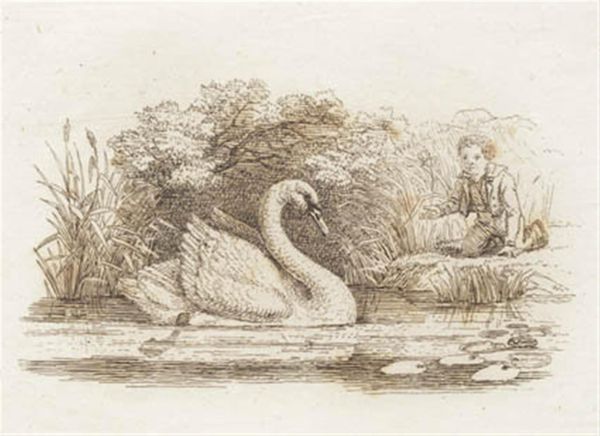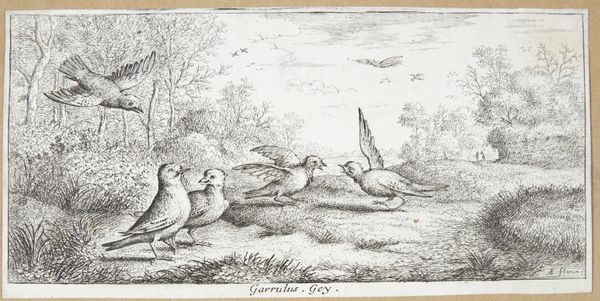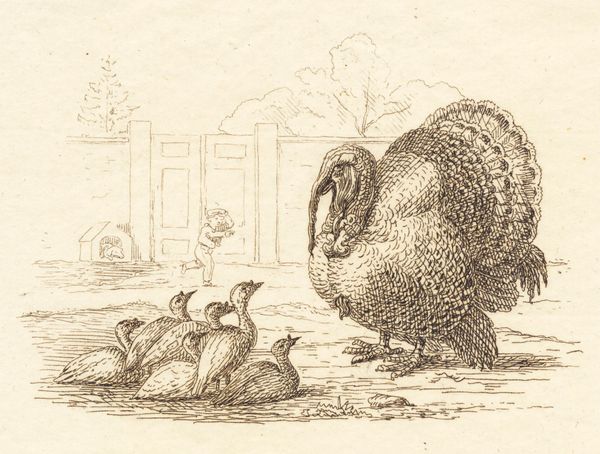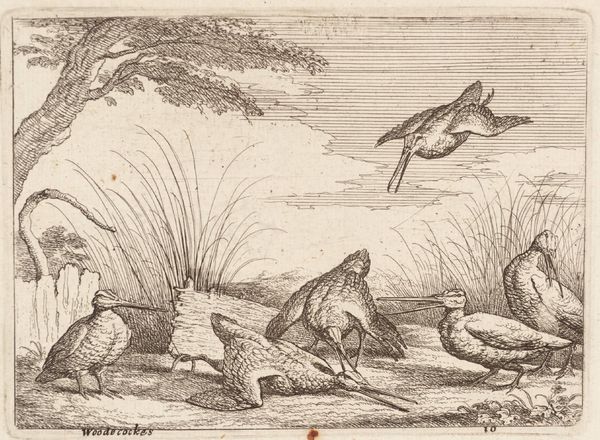
Illustration til "Halvhundrede Fabler for Børn" af Hey 1834
0:00
0:00
print, engraving
#
narrative-art
# print
#
landscape
#
romanticism
#
genre-painting
#
engraving
Dimensions: 89 mm (height) x 115 mm (width) (bladmaal)
Curator: Welcome. This print, crafted by Martinus Rørbye in 1834, is entitled "Illustration til "Halvhundrede Fabler for Børn" af Hey". Editor: The line work is extraordinary; almost obsessive, yet beautifully organized into light and shade to achieve depth. I feel instantly pulled in by the tension between the boy and the swan, their placement directing the eye toward the romantic architecture in the background. Curator: This engraving speaks to the broader interest in genre scenes during the Danish Golden Age, a time when artists looked to capture everyday life and embed it within a sense of national identity and shared moral narratives. This piece likely served an educational function, accompanying fables intended for children. Editor: Let's look closely at the figures. Observe how the swan’s aggressive posture contrasts the almost cartoonish depiction of the young boy who appears mischievous in his stance. I would point out that the linear perspective used in the drawing of the building gives the image a perfect balance between foreground action and background serenity. Curator: That background hints at the civic values emphasized in that time period – the importance of religion and community. The print's distribution alongside moral tales certainly implies that the socio-cultural norms were intended to be imposed through imagery. Editor: From a formalist point of view, the deliberate arrangement of forms and values works to intensify narrative elements that create multiple spatial cues which both unify and separate planes in depth and value. Observe how the textures of the reed and fowl feathers are remarkably descriptive despite their scale and limited tonal values. Curator: A Romantic artist at heart, Rørbye frequently embedded notions of individual duty to both the collective cultural health and patriotic nationalism. He sought a kind of narrative truth-telling during Denmark's own reconstruction. Editor: Thinking about how Rørbye used subtle elements to build so many meanings and levels of perception here offers, even in its relatively diminutive scale, considerable compositional and emotional resonance. Curator: Absolutely, and the fact that it was disseminated as a print meant it reached a broad public, shaping perceptions in a way we are only beginning to grasp now. Editor: It has been helpful for me to think through the many compositional elements that reflect our changing historical understanding.
Comments
No comments
Be the first to comment and join the conversation on the ultimate creative platform.
